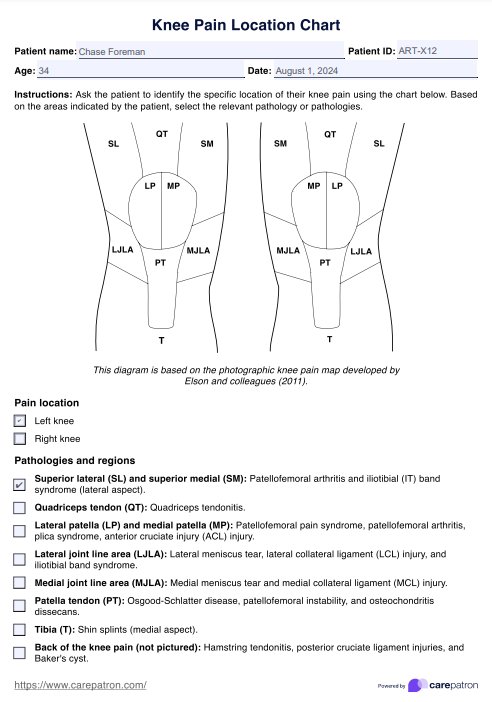It links the location of knee pain to common conditions affecting that specific area, allowing for a more focused examination and a quicker route to the correct diagnosis.

Knee Pain Location Chart
Use our Knee Pain Location Chart to identify the cause of your patient's discomfort. Download our free PDF now.
Use Template
Knee Pain Location Chart Template
Commonly asked questions
Yes, it can be helpful for various types of knee pain, including acute injuries, chronic conditions, and overuse injuries.
No, they can also help monitor the effectiveness of treatments and guide rehabilitation exercises or therapy for knee injuries.
EHR and practice management software
Get started for free
*No credit card required
Free
$0/usd
Unlimited clients
Telehealth
1GB of storage
Client portal text
Automated billing and online payments











